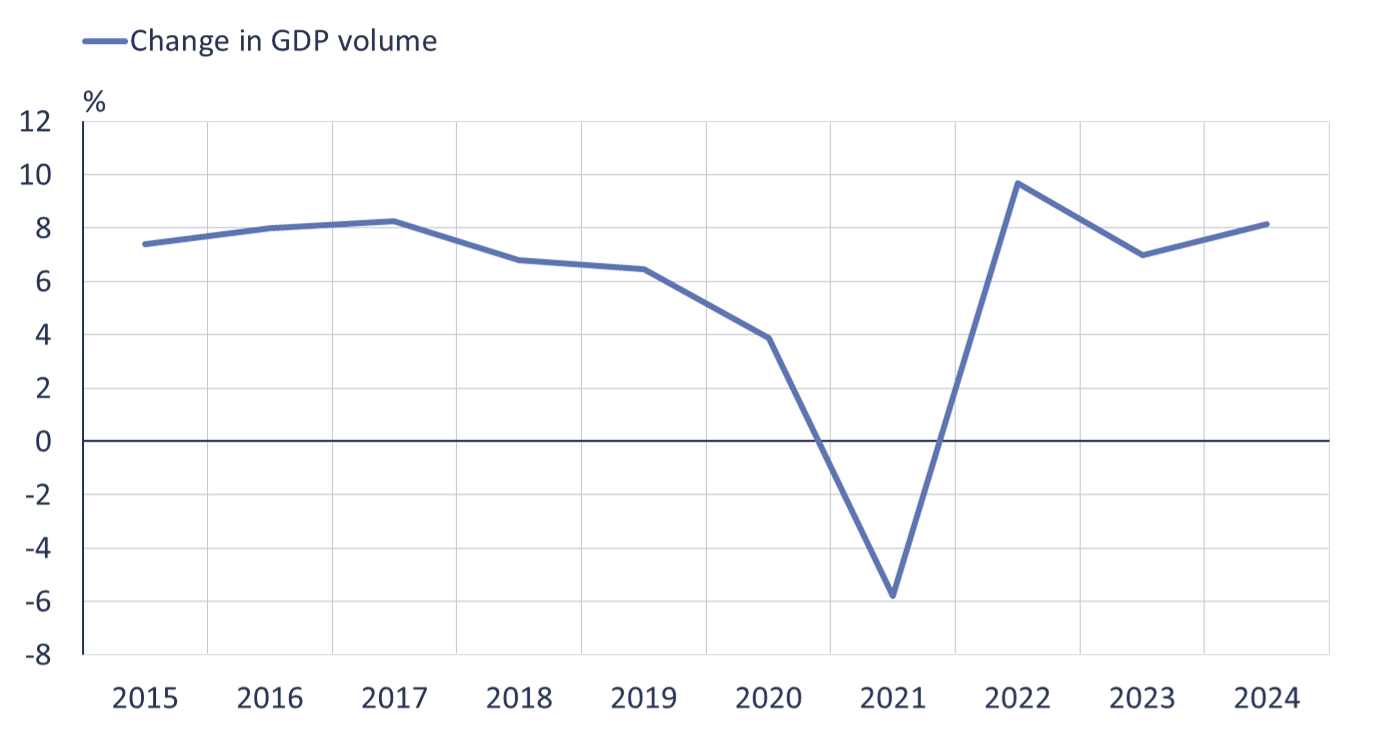BOFIT Weekly Review 24/2024
Despite a booming economy, Modi’s party posts surprisingly weak win in India’s parliamentary elections
Going into last week’s election, pollsters predicted Prime Minister Narendra Modi’s Bharatiya Janata Party (BJP) would, as it has since 2014, continue to control a simple majority of seats in India’s 543-member lower house, the Lok Sabha. The Indian National Congress Party came in second with 99 seats. Although BJP won, it took just 240 seats, far few than in the previous parliamentary elections, and must now form a coalition government with other parties. The BJP’s lacklustre performance was nevertheless sufficient to assure its leadership of the government for the next five years.
The new cabinet takes office with an economy estimated to have grown by 8.2 % y-o-y in fiscal year 2023/24 that ended in March. Fixed investment, supported by the central government, states and union territories, grew by 9 %. Private consumption growth was a more modest 4 % and public consumption just 2 %. With exports growing by just 3 % and imports by 11 %, the trade deficit exceeded 2 % of GDP.
India’s economic performance seems to have remained strong in recent months. The situation is especially favourable for the service sector, which saw the services subindexes of the purchasing managers index soar to a record-high readings. While industrial growth appears to have slowed slightly from peak levels, it remains impressive.
Most major forecasts assume the Indian economy will continue to enjoy strong growth in the years ahead. The spring forecasts of the IMF and the Reserve Bank of India, for example, expect real GDP growth for the next several years in the range of 6–7 % y-o-y. The expectation of sustained high growth is bolstered by roughly balanced national economy that enables to continue the current economic policy. The foreign trade deficit is sufficiently small that it can be financed with foreign investment in the growing Indian market. Public finances are in deficit and the ratio of public debt to GDP is 83 % (which, while high, is stable as long as the high growth continues). The inflation rate (4.8 % y-o-y in May) is within the central bank’s target range.
Economic reforms are the largest challenge facing the incoming government. Modi’s cabinet has actively pursued economic reforms, but their implementation has proved challenging. For example, the legislative attempts of the previous parliament at increasing the efficiency of labour markets and the agricultural sector were unsuccessful. Rapid industrialisation is needed to keep India’s youth employed. The outcome of the current EU-India trade talks should provide some indication of the policy direction chosen by the new Indian government.
India posted high GDP growth in fiscal year 2023/2024
Note: Fiscal year runs from April to March.
Sources: Indian Statistical Service, BOFIT.